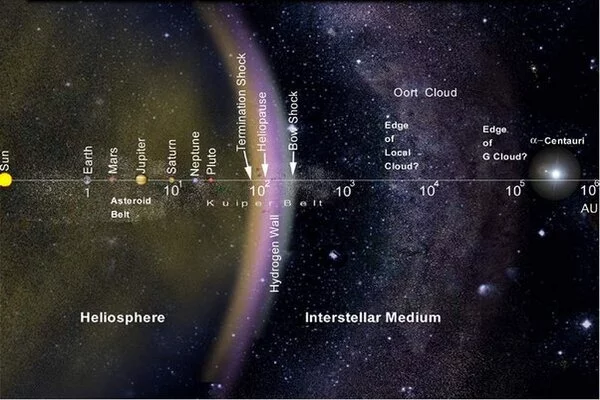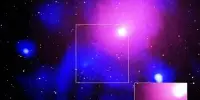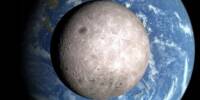Humanity has spent the last decade exploring interstellar space. NASA’s Voyager 1 spacecraft was 11 billion miles (18 billion kilometers) from the sun on August 25, 2012, and scientists determined that the venerable spacecraft had crossed the boundary between the sun’s influence and the interstellar medium. Voyager 1 and its twin, Voyager 2, which joined it in interstellar space in 2018, are still sending back data and conducting groundbreaking research.
Voyager 1 and Voyager 2 were launched in 1977 with the intention of exploring Jupiter and Saturn. Voyager 2 also visited Uranus and Neptune, whereas Voyager 1 prioritized Saturn’s giant moon Titan, which sent it on a new trajectory to the solar system’s edge. It wasn’t until after Voyager 2’s flyby of Neptune in 1989 that the interstellar mission was conceived.
“Nobody ever expected the Voyagers to leave the interstellar medium,” Merav Opher, an astronomer at Boston University who runs a center called SHIELD that’s revisiting Voyager data in an effort to learn more about the heliosphere, told Space.com. “They had a five-year lifetime that was extended for another five years, then 10 years, but nobody really thought that they would be leaving the solar system.”
What the twin spacecraft have discovered about the heliosphere — the magnetic bubble that surrounds us — could have consequences for our understanding of life on Earth.
Nobody ever expected the Voyagers to leave the interstellar medium. They had a five-year lifetime that was extended for another five years, then 10 years, but nobody really thought that they would be leaving the solar system.
Merav Opher
Voyager 1’s interstellar moment
Voyager 1 became the first human-made object to explore interstellar space — the space between the stars in a galaxy — when it was 122 astronomical units (AU) away from the sun. (One AU is the average distance between Earth and the sun and equals about 93 million miles or 150 million kilometers.)
Scientists know for sure that the Voyager probes have crossed from the heliosphere — where the solar wind, a stream of charged particles from the sun, dominates — into interstellar space because of particle density.
“The density was 10 times larger than what we find in the solar wind at those distances,” Opher said of readings from late 2018. Voyager 1 was out.
Voyager 2’s instruments detected the same jump in particle density when it entered interstellar space on Nov. 5, 2018.

Revealing the heliopause
The probes’ crossing into interstellar space may have been clearcut, but the heliopause — a “twilight zone” between the bubble-like heliosphere and interstellar space — had unexpected properties. Each spacecraft took a couple of months to cross through, during which time they sent back data on peaks and troughs in plasma density.
“We expected it to be a bleep, but the heliopause is not like a line or a door — it’s much thicker and more complex than we thought,” Opher said. “But it’s also a boundary that allows communication.” The amazing discovery that particles come in and out of the heliosphere was from magnetic field data first from Voyager 1 in 2012, then from Voyager 2 six years later.
A magnetic mystery
Voyager 1 and 2’s data on magnetic fields in the heliopause confused scientists. There ought to have been a change where the magnetic field from the sun met that from space, with theorists expecting the magnetic field from the galaxy to be inclined to the solar magnetic field. But neither Voyager 1 nor Voyager 2 detected magnetic field direction changes.
“When Voyager crossed there was no change in angle. The magnetic field stayed almost solar-like, with no rotation,” Opher said. It’s still a puzzle, but Opher and her collaborators have a theory about magnetic field flux tubes in the heliopause that connect the solar field with interstellar field. “It’s almost like there are these highways for particles to go in and out of the heliosphere,” she said, adding that it’s probably a region where the magnetic field reconnects.
The heliopause appears to be the warped surface of the heliosphere that responds to solar activity, but why remains an open question.
Beyond the heliopause
Voyager 1 is now 40 AU beyond the heliopause, enabling scientists to discover what the interstellar medium is really like. It turns out to be much more influenced by the heliosphere than previously thought. “The interstellar medium as measured by the Voyager probes is not quiet, it’s agitated and influenced by the sun,” Opher said. “It’s so different than we expected and we still don’t really understand what’s going on.”
According to the data, galactic cosmic rays behave differently depending on whether they are parallel or perpendicular to the magnetic field of the sun. “We expected to see galactic cosmic rays coming from all directions,” Opher explained.
The data can be linked to coronal mass ejections (CMEs) from the sun, which cause magnetic field disturbances far out into the interstellar medium. It has compelled scientists to reconsider how cosmic rays can reach Earth.
















